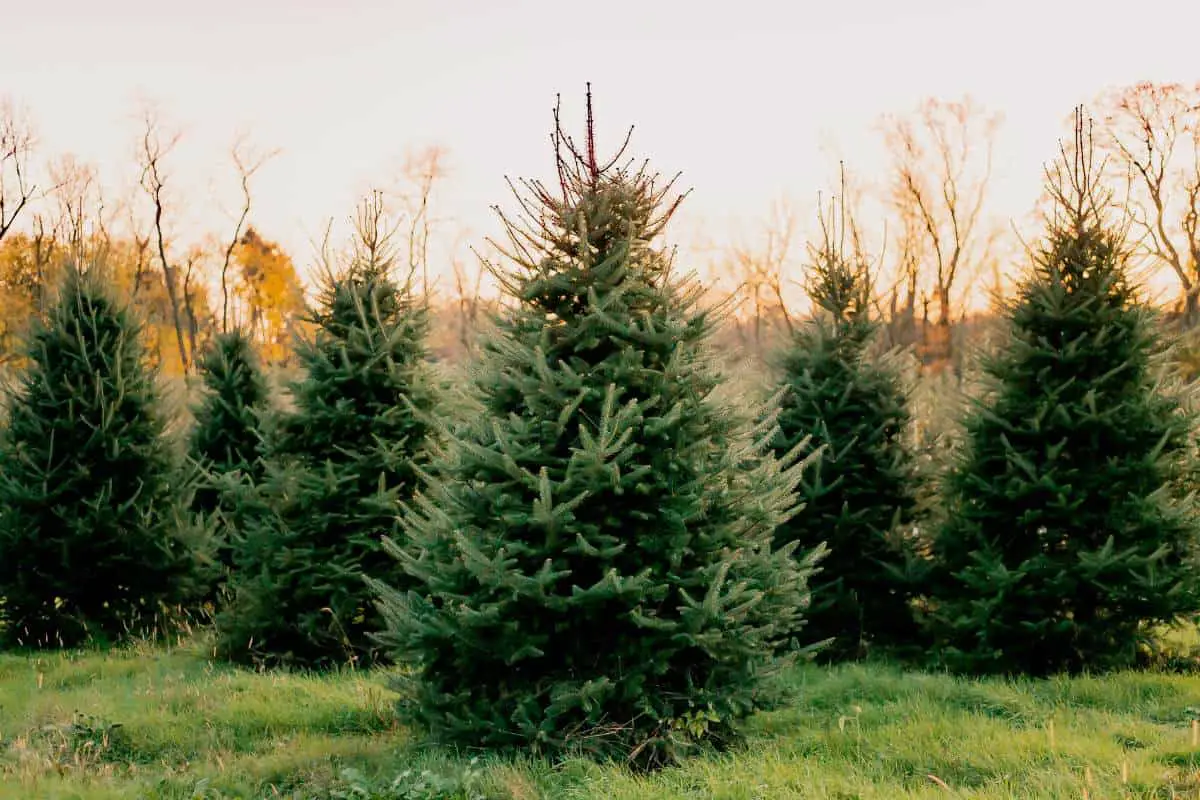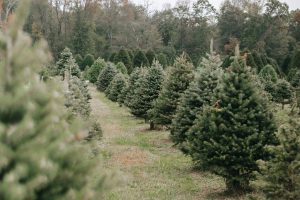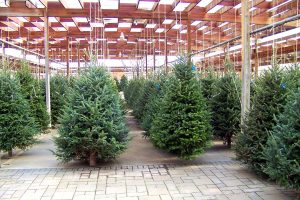This page may contain affiliate links. If you click and buy, we might get a small commission at no cost to you.
Should you get a real tree or a fake tree this Christmas? For some people, real trees are the only way to go when it comes to all the Christmas tree options. If you are one of those people and enjoy having the scent of a real tree in your home during the holidays, then these tips of how to get rid of Christmas tree bugs may be helpful to you!
Whether you’re sticking to tradition or trying something new this holiday season, there are some things you’ll need to know about the bugs that call these trees homes. Luckily most of the bugs on Christmas trees aren’t dangerous to people and some even die from starvation once you bring them inside. Nonetheless, it’s understandable why you don’t want these uninvited guests for your holiday festivities. The last thing you want is an unexpected scare when decorating your tree or opening presents.
With all that being said, here are 8 tips on how to get rid of Christmas tree bugs. If you plan on having a real tree in your living room this year, you can thank us later!
How to get rid of Christmas tree bugs
To prevent a bug infestation in your home for the holidays, here are 8 tips to get rid of Christmas tree bugs lurking around.
1. Examine the tree thoroughly
Before you purchase or bring your tree indoors, make sure to examine it closely. Check the branches, needles, and trunks. Be on the lookout for all the 8 common bugs listed above and signs they may be living on the tree. If a tree seems heavily infested, reject it and pick a new one. This process may take time but will be worth it in the long run!
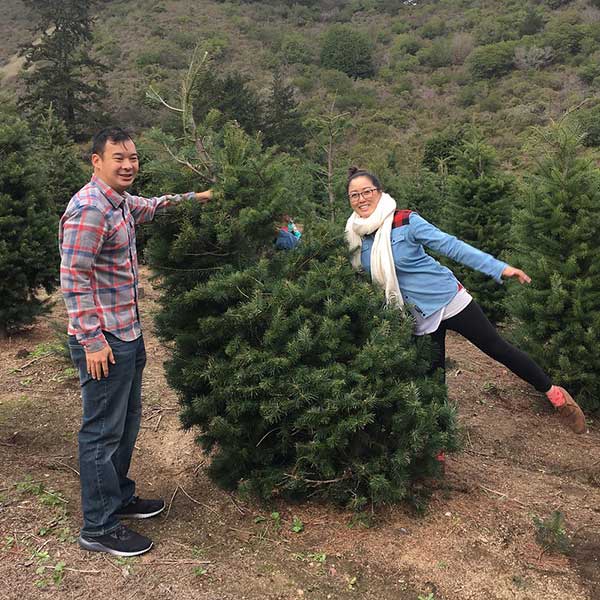
2. Shake your trees
You’ll want to shake the tree vigorously to try and dislodge some of the bugs hidden on it. Some tree lots will have tree shakers you can use for this very purpose after your purchase. If doing this at home, consider putting your tree on a white sheet so you can easily wrap up and remove the dislodged bugs.
3. Spray or dust your tree
You can use Diatomaceous Earth to dust your tree to kill most bugs within 48 hours after the bug ingests it. Another natural alternative is to spray the tree with neem oil to kill bugs during all stages, from eggs to adults. Treat your tree before you start decorating and wait to remove any dead bugs or eggs.
Don’t spray your tree with aerosol pesticides since these products are usually flammable. Aka, they don’t mix well with Christmas lights or tree needles.
4. Leave the tree out first
When you first bring a Christmas tree home, leave it in your yard or your garage for a few days first as you continue to inspect it for any bugs. Having them in your garage where it’s warmer can encourage the eggs to hatch early, so the bugs don’t hatch in your living room.
You can also use this time to spray or dust your tree and wait for the bugs to die before doing a final shake. Another tip is to keep your tree in a bucket of water during this time so it can take up water and stay fresh until you’re ready to bring it indoors.

5. Prune your tree
Sometimes egg sacs won’t dislodge after shaking your tree and you’ll have to do some manual labor. If you find signs of eggs or cocoons on the tree, get some shears or garden scissors and start trimming the areas infested. If there are just too many eggs on your tree and you fear the final result will be a bare-looking Christmas tree, try a different method or consider skipping to tip number 8.
6. Use your vacuum
If you see bugs on the ground under your tree or shake it and end up dislodging eggs or bugs indoors, your best bet of cleaning them up is with a vacuum. Trying to squish them can leave stains and usually they are just too small and many to pick up by hand one-by-one.
Sometimes there will also be dead bugs under your tree since most can’t survive indoors and will die after a few days. Whatever the reason, having a vacuum on hand helps you clean up before placing down presents.
7. Blow the branches of your tree
If you’re not into the idea of shaking your tree and accidentally getting bugs on you, consider a leaf blower or powerful fan. Blast the branches and clean up with a vacuum.
8. Consider a new tree
On rare occasions, your tree may have large infestations where no amount of shaking, dusting, pruning, or spraying seems to get rid of the bugs. In this case, it’s best to get a new tree. Most Christmas tree growers will let you swap the infested one for a new tree, so make sure you have your receipt handy!
Or you can always just start using an artificial tree like this one which is what many people are starting to do. It’s really so much easier and you still get a great looking Christmas tree.
8 types of Christmas tree bugs
Before diving into the tips of how to get rid of Christmas tree bugs, let’s find out what type of bugs you can find in these holiday trees. Here is a list of the 8 most common species and how to identify them on Christmas trees.
1. Aphid
Scientific superfamily: Aphidoidea
Aphids can be black, green, red, yellow, gray, or brown and are pear-shaped insects that like to hang out in the lower boughs and main branches of trees. They are common in pine, evergreen, balsam fir, Fraser fir, white fir, and spruce trees. Make sure not to squish them on your furniture, or they might leave red or purple stains.
2. Spider
Scientific order: Araneae
Spiders give most people the creepy crawlies, so it’s understandable why you don’t want them indoors on your trees. When selecting your tree, check for egg sacs on the needles to avoid new spiderlings hatching in your home. They are typically sacs woven from silk that look like white fluffy balls.
3. Mite
Scientific suborder: Acariformes
Closely related to spiders and ticks, mites are microscopic bugs that can be hard to detect. You’ll want to look out for tiny red and brown dots on the needles. These bugs are common on white pine, Douglas fir, spruce trees, and Fraser fir and will cause needles to drop prematurely and stain your ornaments or carpets red.
4. Bark beetle
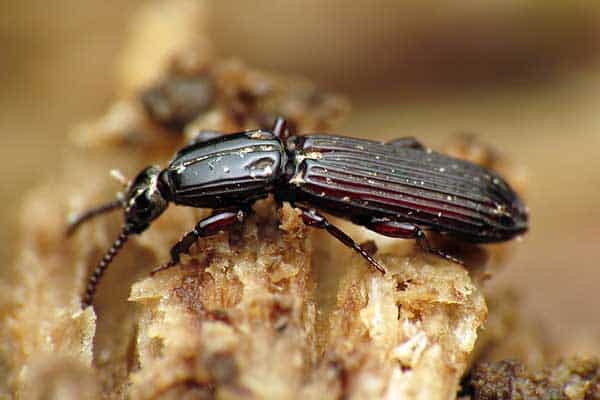
Scientific subfamily: Scolytinae
These red, black, or brown bugs are typically the size of a grain of rice. To identify bark beetles on your trees, look for sawdust trails or small holes on the trunk. They are most common on Coulter pines, white fir, Jeffrey pines, Monterey pines, ponderosa, and junipers.
5. Sawfly
Scientific order: Hymenoptera
Typically found on pine or spruce trees, sawflies are black and yellow flies. To find them on your tree, look out for brown cocoons and remove them before they hatch.
6. Praying mantis
Scientific family: Mantidae
Although an adult praying mantis is green and quite large, you can accidentally bring these insects into your home as eggs on the trees. Their eggs are light tan and walnut-sized, clusters of masses up to 400. They typically hatch a few weeks after you’ve set up your tree indoors.
7. Adelgid
Scientific name: Adelges tsugae
Adelgids are common in Norway spruce, white pine, Scotch pine, and fir trees. They typically leave round, white egg sacs under branches or at the base of needles. Sometimes they look like snow dustings on your tree!
8. Pine needle scale
Scientific name: Chionaspis pinifoliae
Pine needle scale eggs look like white scabs or specs on the branches or needles on your tree. They will hatch into small red bugs and are typically found on Norway spruce, Scotch pine, and Douglas fir trees.
